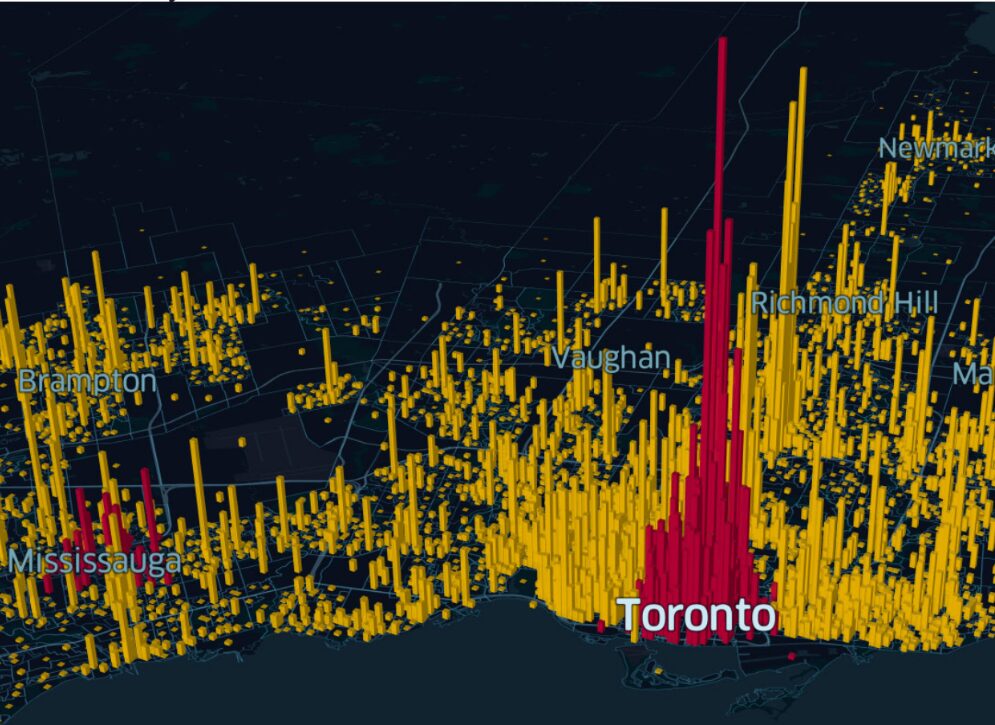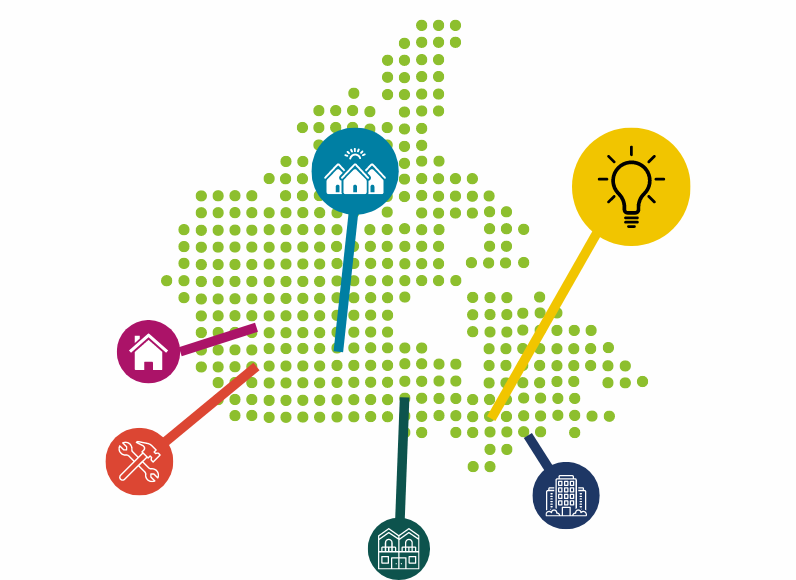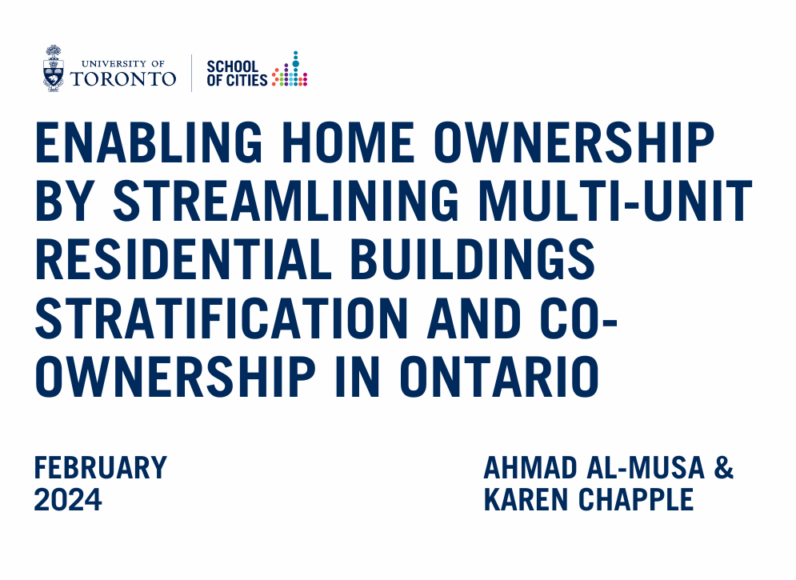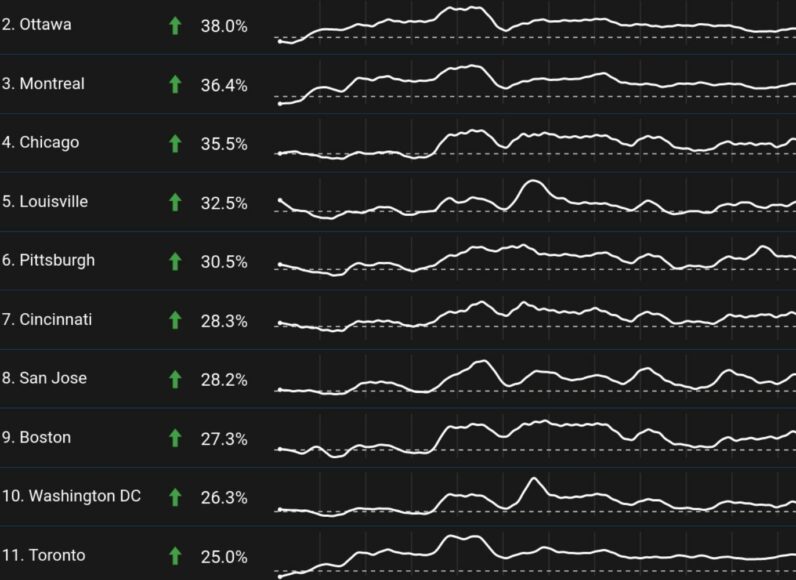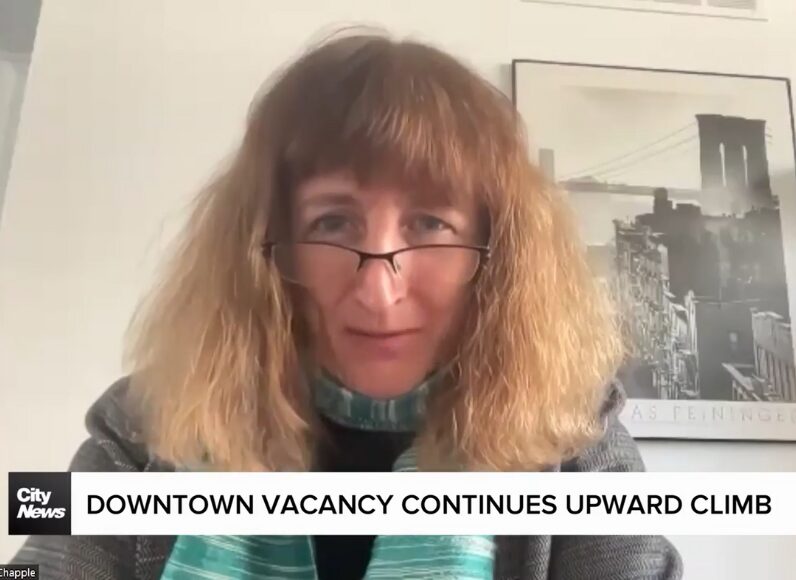By Karen Chapple, Hannah Moore, Michael Leong, Daniel Huang, Amir Forouhar, Laura Schmahmann, Joy Wang, and Jeff Allen
The University of Toronto’s School of Cities and the University of California, Berkeley’s Institute of Governmental Studies
June 2022
The COVID-19 pandemic has reignited discussions about the fate of downtown areas in North America, which have experienced shifts over the past four decades due to suburbanization, urban renewal movements, and remote work trends. The pandemic initially caused downtowns to empty out as people stayed home, leading to concerns about the demise of these urban centres.
To assess downtown vitality, this research utilizes mobile phone data to analyze activity levels in 62 downtown areas compared to pre-pandemic times. Results show varying degrees of recovery, with factors such as shorter commute times and the presence of certain economic sectors positively influencing recovery rates. However, older, denser downtowns reliant on professional or tech workers within large metros are struggling to return to pre-pandemic levels, likely due to the permanence of remote work, even under hybrid models.
The authors conclude by suggesting reinventing downtowns by diversifying economies, repurposing office buildings, and creating vibrant public spaces through collaboration between public and private sectors. The research brief emphasizes the importance of ongoing tracking of downtown recovery and suggests further research to explore additional factors impacting recovery, such as crime rates and new development.



